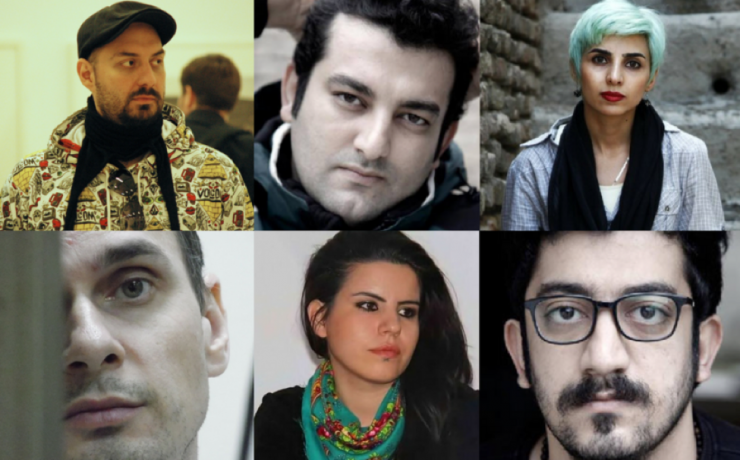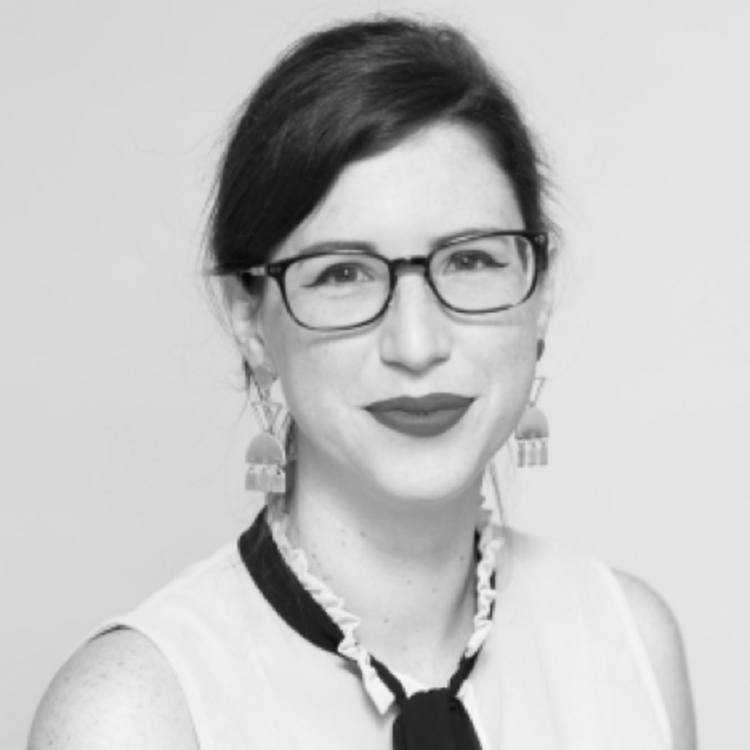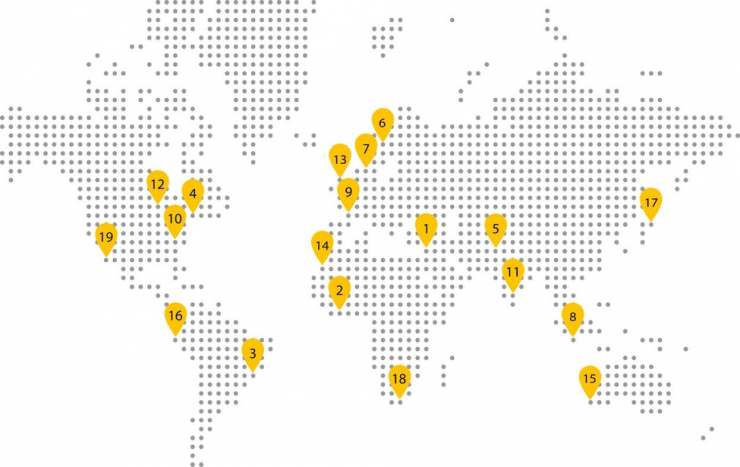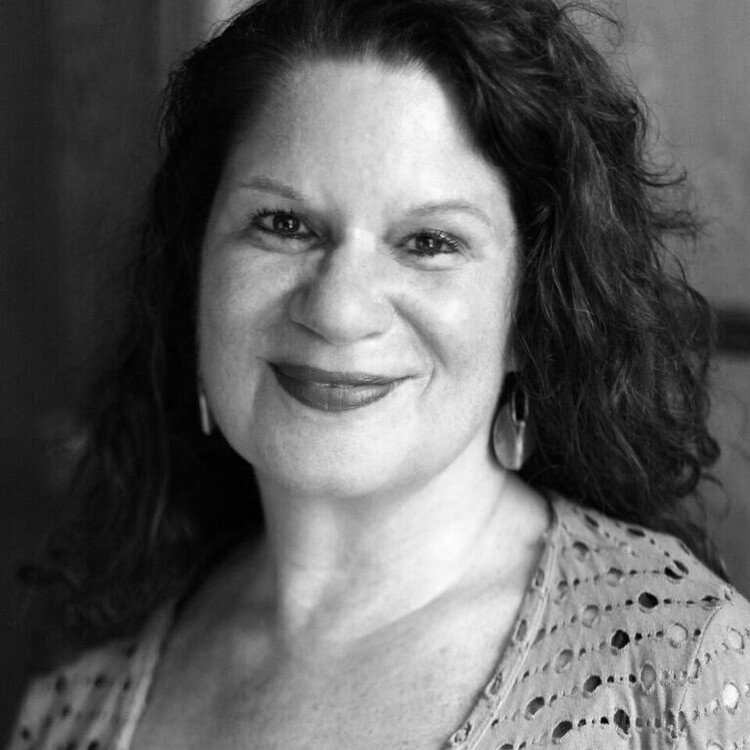A Global Network That Protects and Defends Artists at Risk
There is a shortage of global organizations working to secure the rights and safety of performers at risk, especially theatre artists, whose needs are often harder to meet in cities of refuge as they require other artists with whom to collaborate. Despite the excellent work of FreeMuse, PEN, ICORN, freeDimensional, and the Arts Rights JusticeEU working group, we need more involvement from the general public and from artists in the free world. Some of the major issues we are dealing with in the field of artist rights and safety include reaching artists in peril, assisting artists to escape home country threats, coordinating placement and host options, supporting threatened artists (including legal, medical, educational, and artistic support), and spreading awareness to arts communities and beyond. This series will highlight the work that is being done around artist rights and safety in the theatre world, in the hopes that we can ignite dialogue, spark further exploration, and encourage more people to get involved in this growing field.—Jessica Litwak, series curator
Artists around the world are increasingly facing attacks for their work. When they are able to express themselves freely, artists stimulate innovation, promote dialogue, bear witness to inhumanity, articulate cultural critiques, and work with communities to effect change. Because of the power they hold, artists are facing censorship and intimidation by both governments and non-state actors. In their latest report, Freemuse, an independent international organization advocating for and defending freedom of artistic expression, examines 553 cases of artistic freedom violations in seventy-eight countries that occurred last year. They found that forty-eight artists were serving combined sentences of more than 188 years in prison. These numbers are shocking, but the issue is not new. This increased crackdown on freedom of expression stresses the need for more and better-coordinated resources to defend and protect artists.

There are many organizations, both local and international, that help threatened artists, but they tend to be under-resourced, difficult to find, and poorly networked, making it difficult for artists to access and receive vital assistance. The Artists at Risk Connection (ARC) was launched to respond to this very issue. A network of artistic organizations across disciplines, ARC builds on the accomplishments and ingenuity of its more than 600 partners worldwide to offer faster, more efficient, and more comprehensive assistance to the most vulnerable artists and to build a worldwide community for arts practitioners. ARC facilitates connections between artists at risk and potential resources, and strengthens the collaboration between existing organizations worldwide. A lot of work has gone into making the website where the hub is housed easily accessible and translated in different languages. For the very first time, artists in need can go to one location to research support options ranging from urgent relocation funds, legal aid, immigration counsel, public advocacy, emergency grants, fellowship and residency referrals, and housing.
Since its initial launch in the fall of 2017, the Artists at Risk Connection has connected sixty artists living in thirty different countries with the best equipped organizations to respond to their needs.

When an artist visits ARC’s website, they have two options. The first is to browse through all the resources using a simple search interface. Artists can customize their search using filters to identify their options according to their artistic discipline, location, demographic, or the urgency of their need. Clicking on the name of any organization will display the organization’s website, services provided, contact information, and direct links to applications, so artists can reach out for assistance. It is also meant as a resource for organizations who may have been contacted by an artist in need, but do not have the capacity to help them or their request does not fit their mandate. By easily searching the database, they can provide the artists with additional suggestions and referrals.
Artists in immediate need can reach out to the ARC team through a contact button that leads them to a safe, encrypted form currently available in five languages. The form allows ARC to gather the essential information the team needs to respond to the artist in a dire situation in less than forty-eight hours. If the information provided is not sufficient, ARC contacts the artist in a secure manner and requests more information regarding the threats, their most urgent needs, the motivation behind the threats, the location of the artist, and other potential dangers to consider. Once ARC understands the specific circumstances and needs of the artist, its team assesses the best possible aid and then provides the artist with a curated list of potential resources. These preliminary steps are essential to the process before ARC contacts the organizations who are best equipped to help the threatened artist. To ensure that the individual’s needs are met thoroughly and that they are moved to a situation of safety and security, ARC follows up on the progress of the artist and the organization. ARC provides a direct personal support, while maintaining safe and confidential communication with the artists and the organization.
The Artists at Risk Connection was created in response for a particular need in the artistic freedom field; the need for a more unified and connected network.
The need is substantial. Since its initial launch in the fall of 2017, ARC has connected sixty artists living in thirty different countries with the best equipped organizations to respond to their needs. The work is challenging and ARC is working to identified further partners in several regions that are underrepresented within the hub. Of the regional partners included in the hub, twenty-five are located in Africa, thirty-one in Asia, twelve in Australia and Oceania, five in Central America, 127 in North America, ninety-one in Europe, thirty-five in the Middle East and North Africa, and twenty-eight in South America.
Developing the network further and ensuring it is as globally representative as possible is key to ARC’s success. This is clear when one looks at the partnerships that were required to respond successfully to all the artist requests received so far. The most in-demand resource was urgent funds for artists to relocate to safety or support themselves when unable to work due to threats. Partners like Urgent Action Fund (UAF), Freedom House, and ProtectDefenders.eu have regional staff or members that allow them to qualify the situation on the ground and deliver help quickly, efficiently, and safely. A safe residency, short or long-term, is another much sought after resource for artists in dire situations. Organizations like ICORN, APF, and the Shelter City Initiative engage cities, universities, and cultural institutions to provide safe haven to at-risk artists and give them the space and means to continue to create. In other cases, when the artist has already been imprisoned, public and international pressure is the only way to bend the arm of censoring governments. In the case of cartoonist Ramón Esono Ebalé, imprisoned by the government of Equatorial Guinea, it took a coalition of more than eighteen international human rights organizations to bring about change. After six months in jail, the prosecution dropped all charges against Ramón Esono Ebalé at his first trial in February 2018. However to this day, Ramón is still unable to leave Equatorial Guinea and the coalition continues to advocate on his behalf.
ARC was created in response for a particular need in the artistic freedom field; the need for a more unified and connected network. It is a connector, amplifier, and supporter of organizations and threatened artists alike. Its strength lies in an international, diverse, and wide group of organizations who all seek to protect and assist artists. In this particular time in history, it is critical to stand behind the voices of artists that challenge and provoke us.





Comments
The article is just the start of the conversation—we want to know what you think about this subject, too! HowlRound is a space for knowledge-sharing, and we welcome spirited, thoughtful, and on-topic dialogue. Find our full comments policy here
So great to know something like this exists.
This is a comprehensive and very useful exposition. Thank you for writing! Great work.